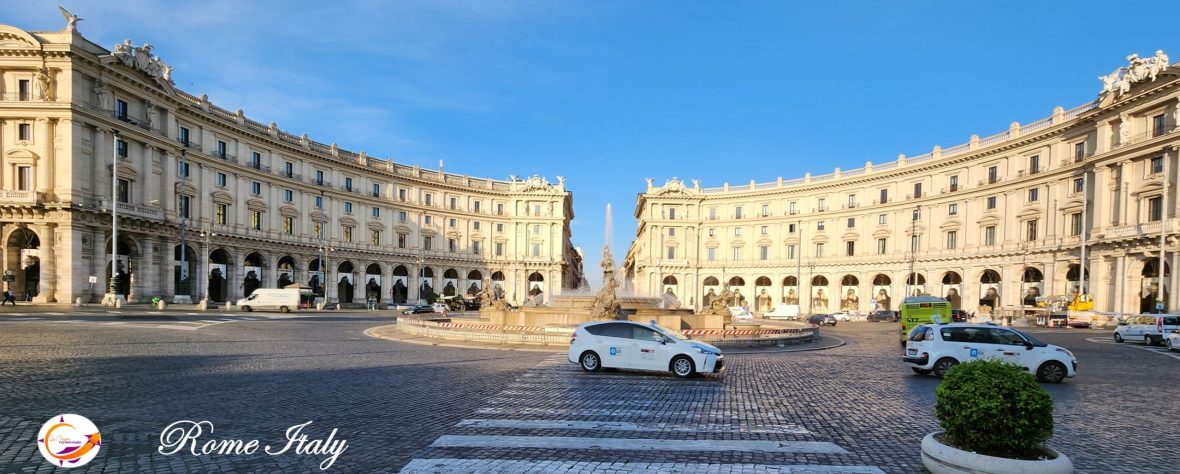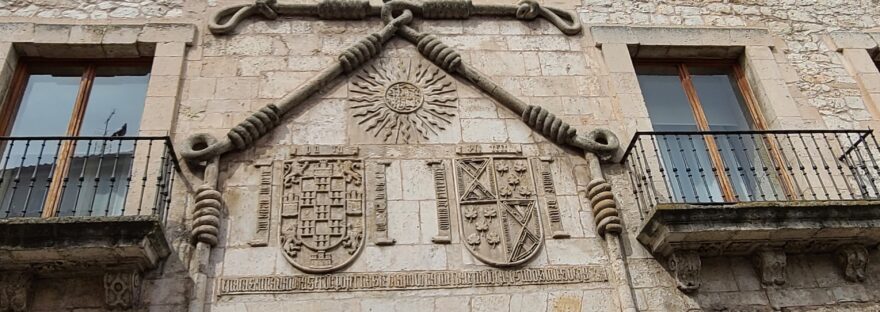Visiting the Main Square in Burgos (Spain), we came upon the Palace of the Constables of Castile, better known as “Casa del Cordón”. A very curious name for this 15th century palace, and as always, there is a story behind its popular name.
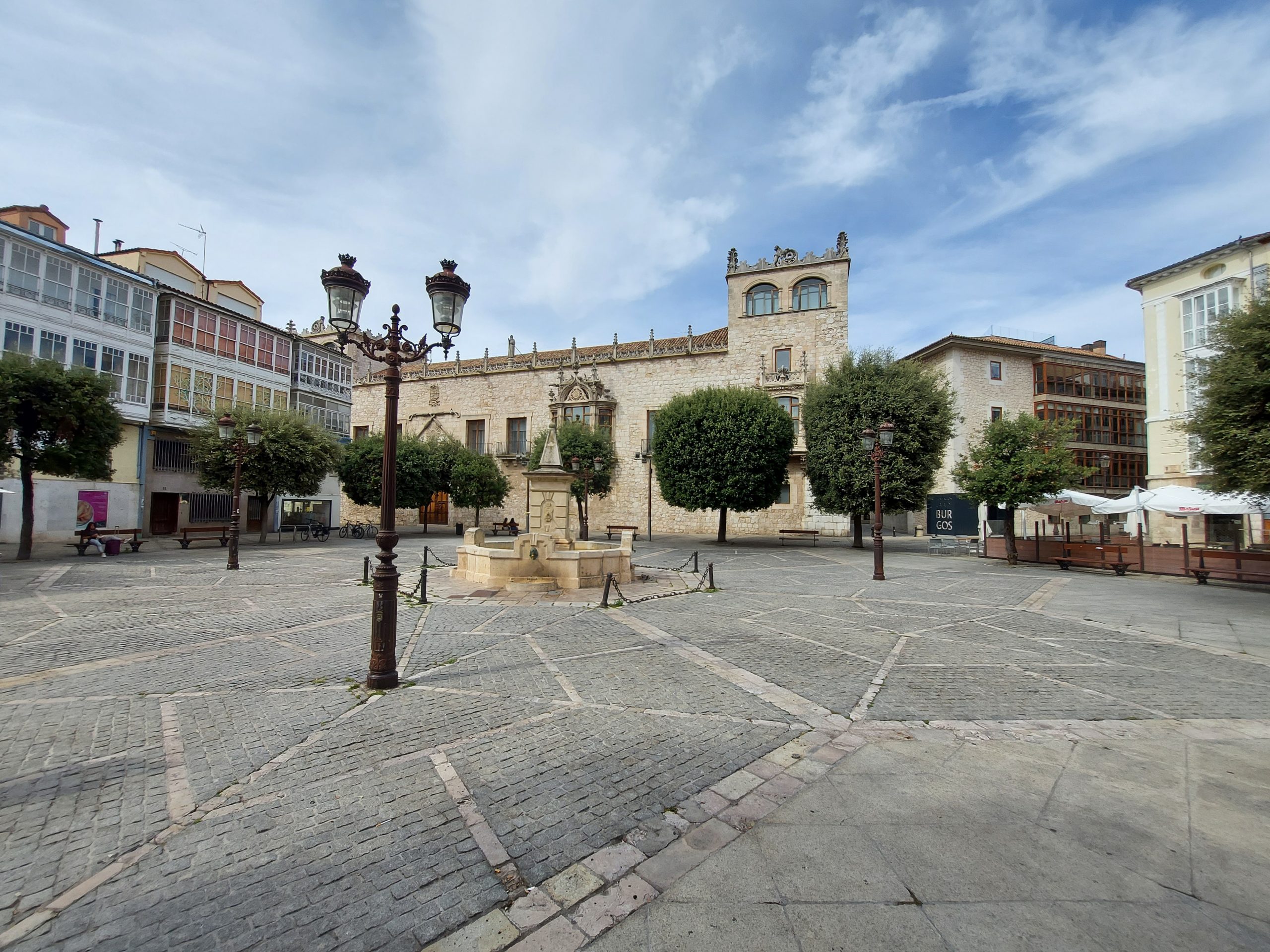
Juan de Colonia and his son Simón are credited with the original design of the “Casa del Cordón”. In its time it was a civil building of Gothic style where the elements are harmoniously combined with great beauty. The building we find today is quite modified compared to the original design.
In the structure there are numerous representations of the heraldic coats of arms of the couple who owned the palace, Pedro Fernández de Velasco, Constable of Castile, and the Countess Mencía de Mendoza y Figueroa, his wife.
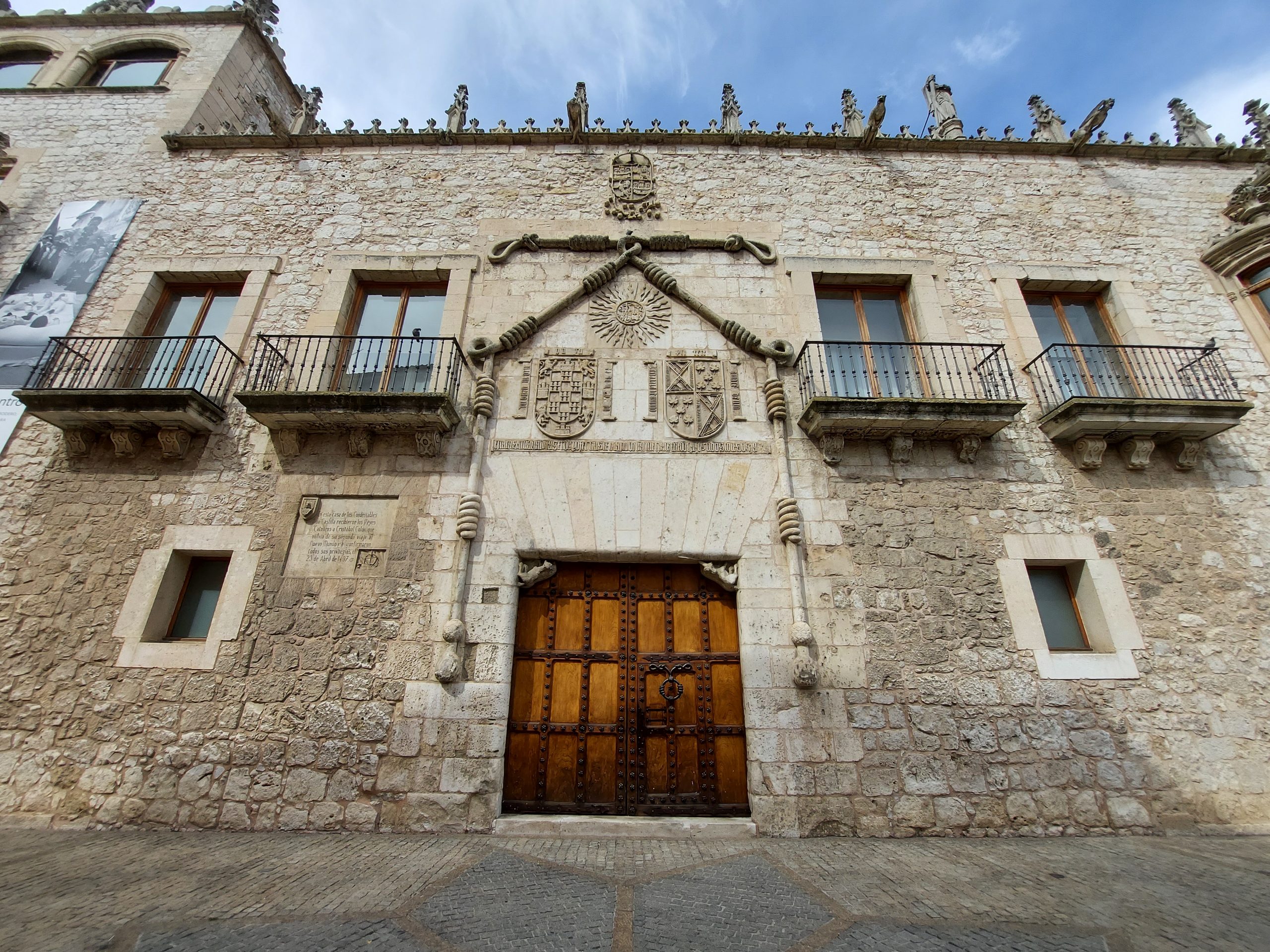
The two coats of arms above the door of the main façade are joined by a Franciscan cord, also sculpted in the stone. Doña Mencía was devoted to Saint Frances and had the Franciscan cord sculpted. This cord is the one that popularly gives the building its name. In addition, the representation of a cord or chains hanging on the door of a house indicated that a king had slept there. And this palace bore witness to this symbolism.
It was a palace of ample dimensions, according to its original design, and included a central courtyard with a double Gothic arcade similar to the monastic cloisters. The main entrance was located on the south façade, and at that time there were gardens to the east façade.
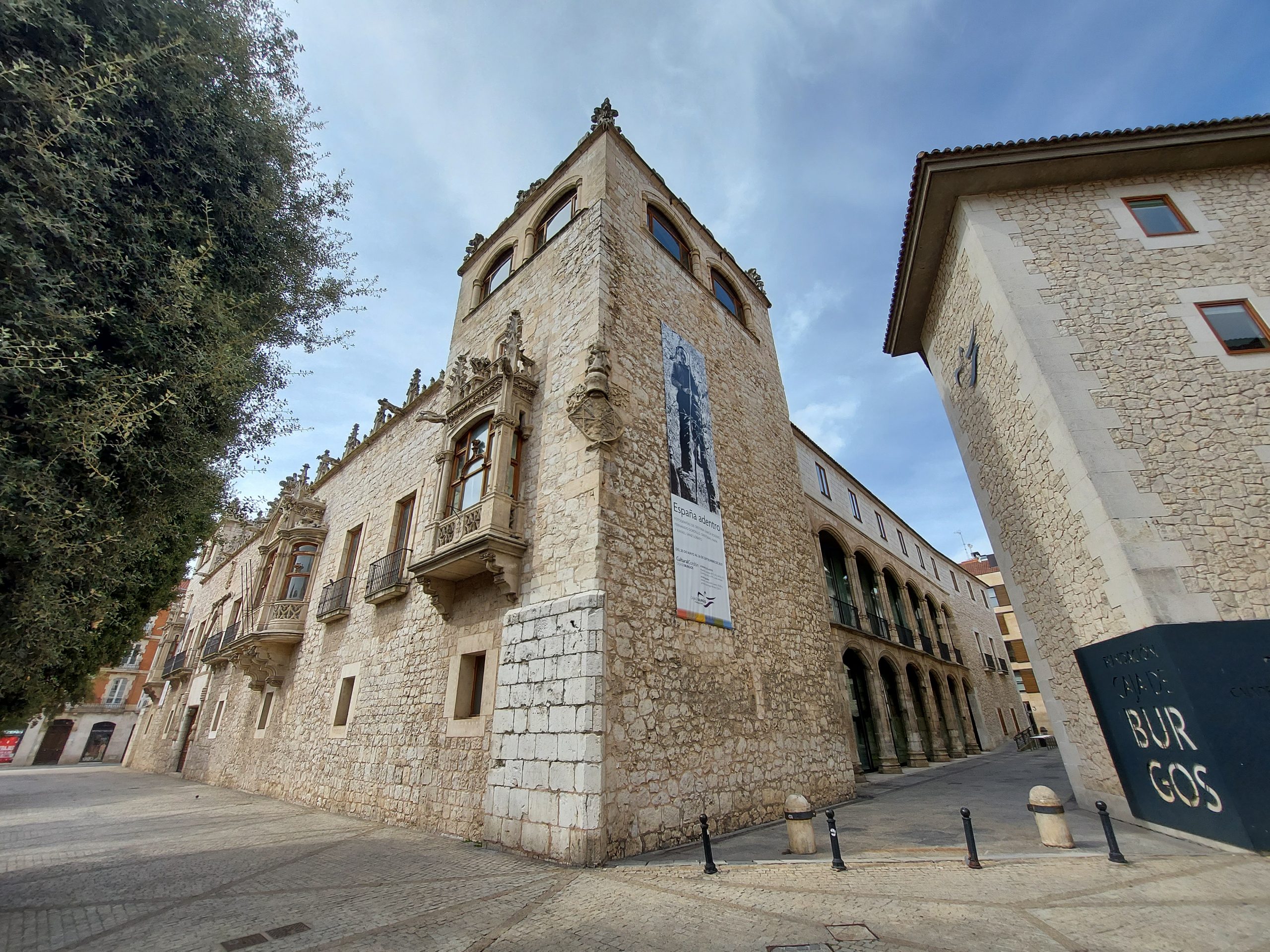
The “Casa del Cordón” was visited by many kings and was the scene of important political and social events. For example, on its main façade an inscription commemorates the meeting of the Catholic Monarchs with Christopher Columbus upon returning from his second voyage to the New World, on April 23, 1497.
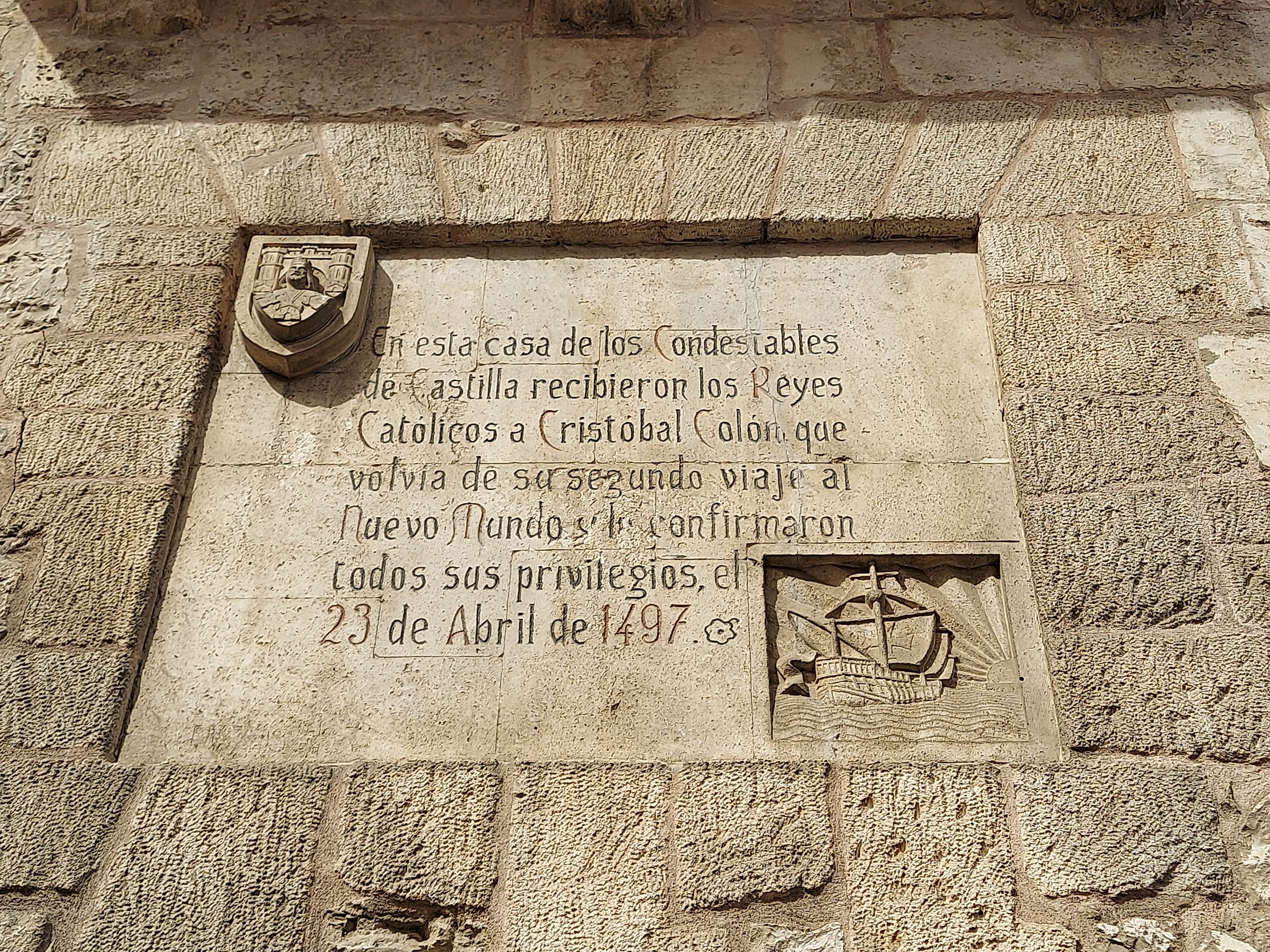
The palace was also the scene of the death of King Philip the Handsome, and it is precisely from this building that the funeral procession departed across Castile to Granada. Shortly thereafter, a Regency Council met in the “Casa del Cordón”, which named Ferdinand II of Aragon regent until his grandson Charles, who at that time was still a child, came of age. From that moment on, the Aragonese king, regent of Castile, established his court in the “Casa del Cordón”, where he received the visit of Pope Julius II, among other personalities. On June 11, 1515, the ceremony of incorporation of the Kingdom of Navarre to the Crown of Castile was held at the “Casa del Cordón”. Another important historical event that took place in this palace was the signing of the Laws of Burgos, the first that regulated the treatment of the Indians in the New World and abolished the slavery of the natives.
As historically happens, buildings fall into disuse, then into ruins, and the “Casa del Cordón” was not an exception. By the 20th century, this palace was no more than a tenement house built of stone, with only a few details that revealed its noble past. However, it was in 1906 that the rehabilitation process of the building began, having its ups and downs. Despite being declared a Historic-Artistic Monument in 1968, the “Casa del Cordón” remained in a decadent state.
It was in the mid-1980s that the bank, the “Caja de Burgos”, carried out a complete renovation, giving it the appearance we see today and aiming to restore its original historical appearance. The restoration included modifications that would make the palace a usable space that would guarantee its continuous maintenance and the preservation of the structure.
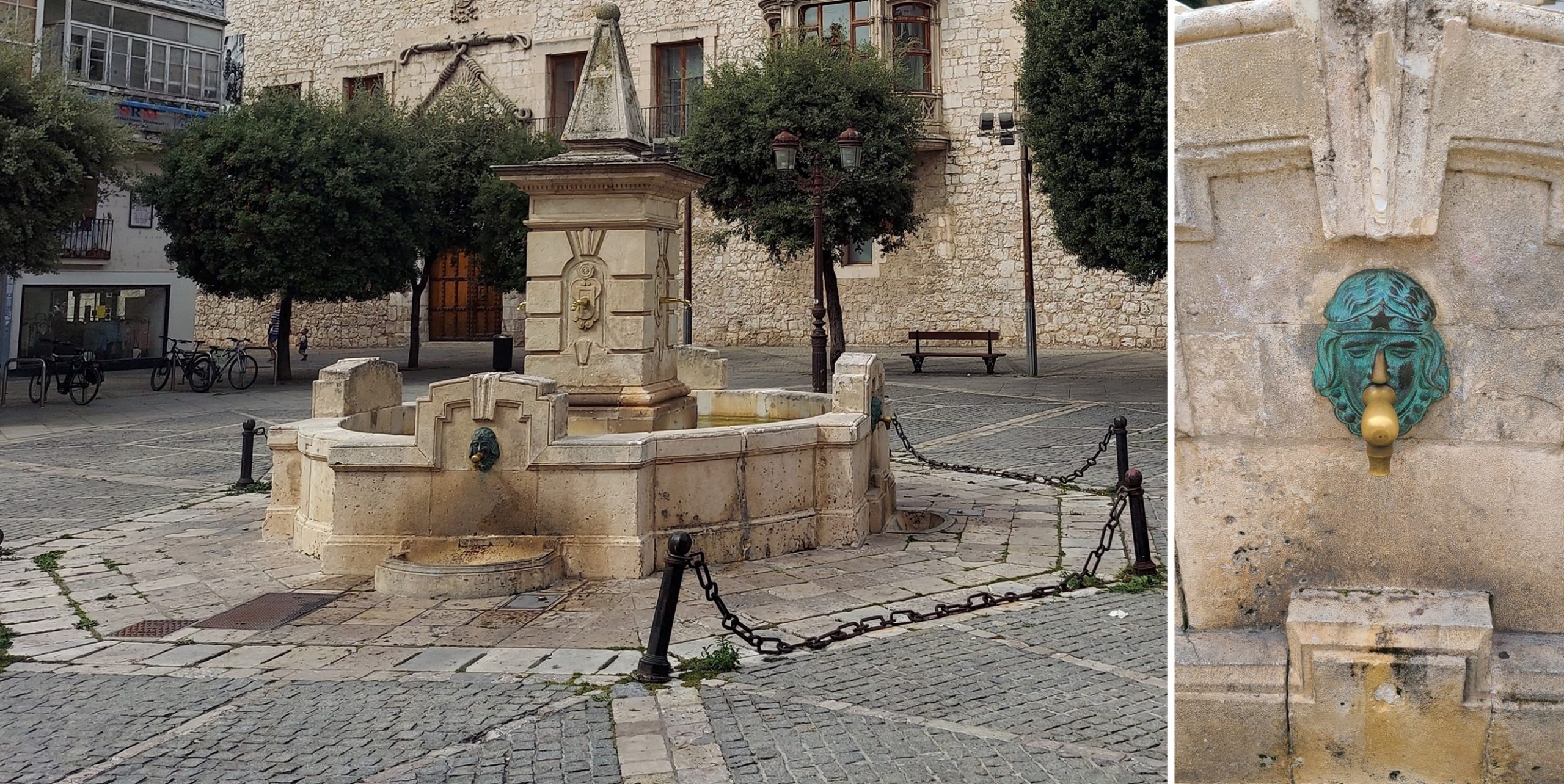
Currently, through the “Fundación Caja de Burgos”, multiple cultural activities are carried out in its “Cordón Cultural” space. This cultural center also serves as the headquarters and head office of a banking institution are located there.
Resources:
- https://es.wikipedia.org/wiki/Casa_del_Cord%C3%B3n_(Burgos)
- http://turismo.aytoburgos.es/los-top-5/casa-del-cordon/
- https://www.inspain.org/es/burgos/burgos/casa-del-cordon/
